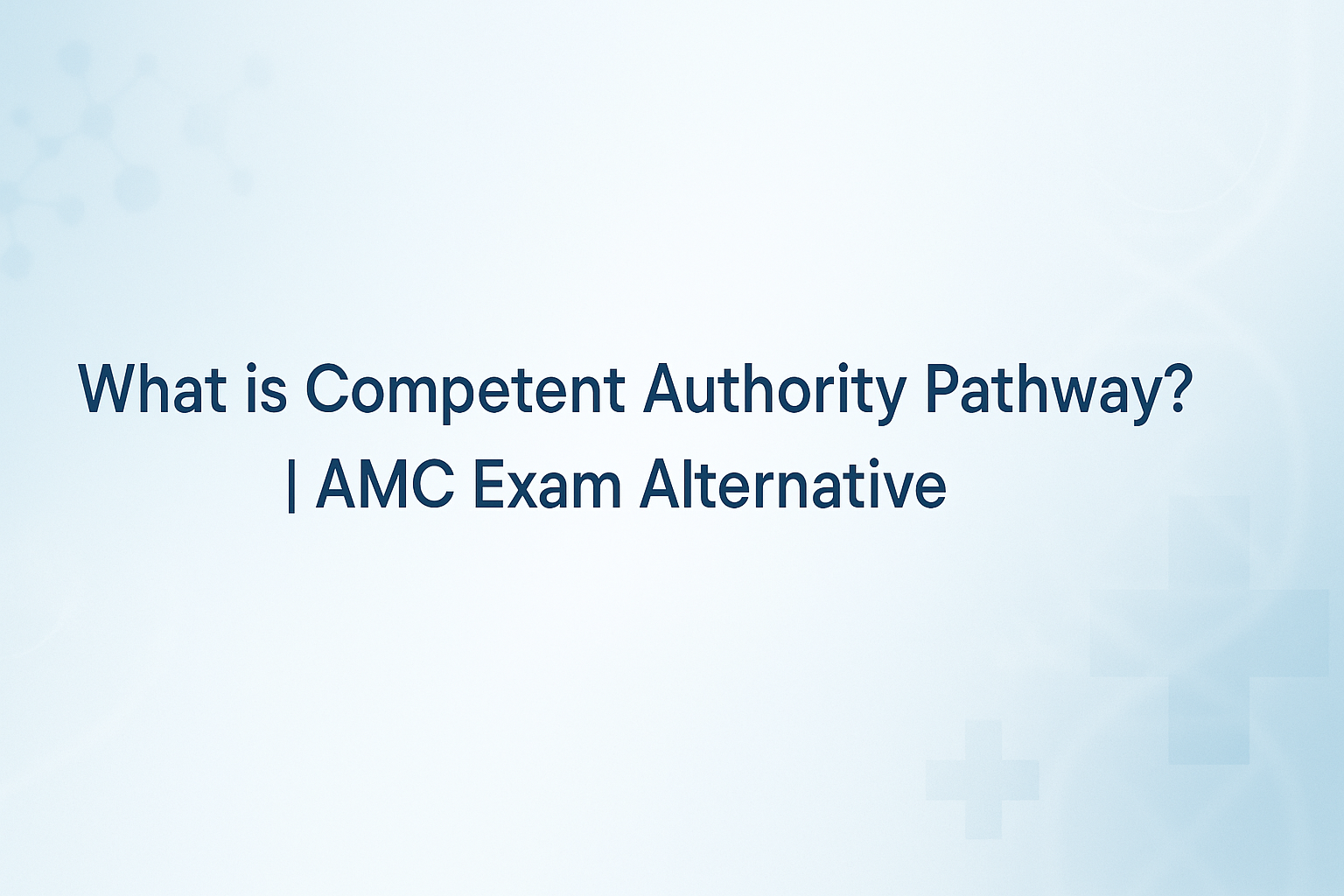OET Vocabulary
What is Competent Authority Pathway? | AMC Exam Alternative
The Competent Authority Pathway (CAP) is a special route for International Medical Graduates (IMGs) to register as clinicians in Australia.
Ordinarily, IMGs who wish to work in Australia must pass the Australian Medical Council (AMC) examinations—essentially the Australian equivalent of a medical licensing exam—followed by supervised training.
However, if certain eligibility criteria are met, IMGs may use the CAP and register in Australia without sitting the AMC exams.
※This article is written by OET Bank, where we specialize in helping healthcare professionals prepare for OET and support their overseas career opportunities.
Competent Authority Pathway
The CAP was established to streamline registration for doctors who qualified in countries recognized for their high standards of medical education and training.
Currently, only five countries are included:
- United Kingdom
- Ireland
- United States
- Canada
- New Zealand
If you obtained your primary medical qualification in a country outside this list, you cannot directly use the CAP.
That said, IMGs from non-listed countries may still qualify if they complete the licensing and training requirements in one of the above jurisdictions. This can sometimes be a more practical alternative to pursuing the AMC exams directly.
Below is an overview of the CAP requirements for each eligible country.
United Kingdom
To be eligible via the UK, IMGs must obtain recognition from the General Medical Council (GMC).
This usually involves:
- Passing the PLAB exam (a two-part test assessing medical knowledge and clinical skills), and
- Completing Foundation Year 1 (FY1), the first year of supervised practice in the UK.
After FY1, doctors are granted General Registration by the GMC.
Due to historical and structural similarities between the UK and Australian health systems, many IMGs registered in the UK find it relatively straightforward to transition to Australia via the CAP.
While English proficiency and exam preparation are significant hurdles, the PLAB + FY1 route can often be completed in a relatively short time frame.
Ireland
The Medical Council of Ireland oversees medical registration.
To qualify via Ireland, doctors must:
- Graduate from an Irish medical school recognized by the Council, and
- Complete a 12-month internship (intern year) in Ireland.
On completion, doctors are issued a Certificate of Experience.
Unlike the UK or US, there is no additional standardized test such as PLAB or USMLE. Graduation and internship completion are sufficient.
However, this route is generally only available to IMGs who pursue medical education in Ireland, so it is less relevant for those trained elsewhere.
United States
To qualify via the US, IMGs must:
- Pass the USMLE (Step 1, Step 2 CK, and the OET for English), and
- Obtain ECFMG certification, which is required for international graduates to enter US residency training.
They must then:
- Match into a residency program accredited by ACGME, and
- Complete at least two years of postgraduate training.
Although the USMLE is highly challenging, there are abundant study resources, making this a viable option for many determined IMGs.
Canada
The Medical Council of Canada (MCC) regulates registration in Canada.
The main requirement is obtaining the LMCC (Licentiate of the Medical Council of Canada), which involves:
- Passing the MCCQE Part I, and
- Completing 12 months of postgraduate clinical training (internship or PGY1 residency year) in Canada.
Although the required training is relatively short, the main challenge is the limited availability of residency positions for IMGs, making this a highly competitive route.
New Zealand
New Zealand has close ties with Australia and shares many accreditation standards with the AMC.
Graduates of New Zealand medical schools are generally recognized in Australia without additional assessments.
For IMGs from non-listed countries, the CAP route via New Zealand usually involves:
- Passing the NZREX (New Zealand Registration Examination), and
- Completing a 12-month rotating internship across four specialties.
The process is clearly defined, and NZREX is specifically designed to assess IMGs. However, competition for internship placements has been increasing, making this route progressively more challenging.
Still, many IMGs view the New Zealand pathway as more approachable compared to the AMC exams in Australia.
Summary
The Competent Authority Pathway provides alternatives to the AMC exams. In simplified terms:
- United Kingdom: PLAB + 1 year internship
- Ireland: Local graduation + 1 year internship
- United States: USMLE + 2 years residency
- Canada: MCCQE Part I + 1 year internship
- New Zealand: NZREX + 1 year internship
For IMGs from non-English-speaking countries, the most practical options are usually New Zealand, the UK, and the US.
After meeting CAP requirements, doctors can apply for Provisional Registration in Australia. They must then secure employment, undergo provisional registration with the Medical Board of Australia, and may face additional requirements such as the PESCI interview (for General Practice).
Following 12 months of supervised clinical practice, IMGs may apply for General Registration, which allows them to work independently as fully licensed doctors in Australia.
Study with OET BANK
Stop wasting time comparing OET materials.
With OET BANK, you get:
- Premium-quality OET materials, built by professionals
- A focused, efficient study path — no unnecessary content
- A system designed to help you pass OET once — without trial and error
If you want to prepare properly and pass with confidence,
you don’t need to look anywhere else.
Pick your materials and start today — with OET BANK.




